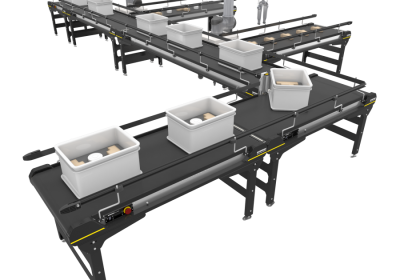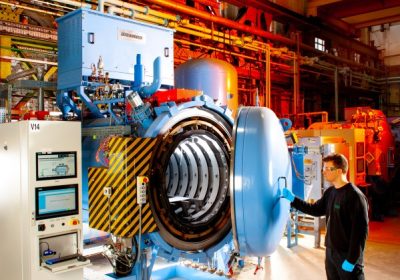~ The need for predictive maintenance ~
“If it ain’t broke, don’t fix it” is a catchy phrase, but it’s not a good rule of thumb. Unscheduled downtime and poor asset quality costs manufacturing and process industries an estimated $20 to $60 billion each year. Unfortunately, such reluctance to embrace new technologies, due in part to the upfront cost, has hindered progress in operations. Here Neil Ballinger head of EMEA at automation parts supplier EU Automation, explains why maintenance technologies can boost a plant’s profitability through increased uptime.
While they may be inevitable, equipment failures should not cause serious downtime, eat into profits or make manufacturers overspend their budgets. Today’s manufacturing facilities are far more complex than ever before, consisting of data networks, integrated hardware and a host of automated systems. As a result, most manufacturers do not have sufficient maintenance methodologies in place. In fact, a report from Infraspeak states that 93 per cent of companies consider their maintenance processes to not be very efficient.
Predictive maintenance is a way to predict every possible hardware failure scenario, identifying when maintenance is required and alerting maintenance staff, when necessary, as well as providing preventative solutions.

Anyone who operates within the manufacturing ecosystem will understand that failures and breakdowns happen day in, day out. The intention of predictive maintenance is not just to prevent or reduce these breakdowns, but to help manufacturing plants achieve high-efficiency standards and deliver quality products in the process. A predictive maintenance program can reduce unexpected failure by up to 90 per cent, almost eliminating breakdowns.
To perform predictive manufacturing effectively, the plant manager should gather as much data as possible. This is crucial when implementing any preventative maintenance strategy, as the more data available to be analysed, the more accurate breakdown predictions will be.
Sensing danger
A starting point would be to use smart sensors. Smart sensors, coupled with machine learning algorithms, help to detect anomalies in industrial machines. For example, smart sensors collecting data in industrial IoT environments can keep track of temperature, identifying worn components such as malfunctioning electrical circuits.
Likewise, specialist smart sensors can perform vibration analysis on a particular component, identifying any cases of misalignment, bent shafts or other motor problems. From this data, manufacturers can perform an analysis of the critical assets to establish failure modes. Here, the focus is on the frequency of failures, severity of machine failure and the difficulty of identifying failure.
By connecting condition monitoring devices to a CMMS, plant managers can set up alerts to inform maintenance staff of any faults or anomalies in the equipment. This provides the opportunity to plan for scheduled maintenance when parts need replacing, removing the chance of a serious breakdown from occurring.
For example, sensor technology can be integrated with several different low-level fluid power products — from connectors, hoses and tubing to pumps, motors, actuators and filters. Here, some of the diagnostic data generated from control valves could be vital in troubleshooting power issues.
Recent machines usually come with different options for real-time data acquisition, but legacy equipment can also be retrofitted with inexpensive add-on sensors. Predictive maintenance can be a vital asset when dealing with ageing assets, which require careful planning to source obsolete spare parts. This is where expert consultants at automation parts suppliers, like EU Automation, can help source parts and assist plant operators in their predictive maintenance journey.
While some extent of equipment failure is inevitable, it should not cause unscheduled downtime and poor asset quality, costing manufacturing and process industries billions each year. Instead, a fully-fledged and effective predictive maintenance plan will help to prevent and reduce downtime significantly, simultaneously boosting a plant’s profitably through increased uptime.








